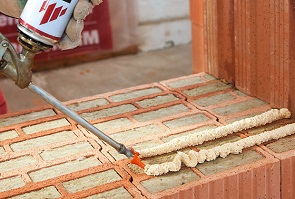
Chamber: Modern building elements complicate the work of structural engineers, they lack technical standards
 |
According to ČKAIT, masonry and bricklaying technology have seen rapid development in recent decades. For example, masonry elements have larger dimensions and purpose-designed openings. They meet the requirements for acoustic properties much better and in many cases can prevent heat loss without the building needing additional insulation. However, all these improvements have negatively impacted the properties that are important for the static solutions and behavior of the entire load-bearing structure, according to ČKAIT.
"The problem is that most manufacturers address the properties of the brick and their connection, but they do not provide information about the appropriate connecting materials or how to connect with traditional reinforced concrete structures,” stated Robert Špalek, Chairman of ČKAIT.
The main issue, according to structural engineer and Chairman of ČKAIT for the Plzeň region, Luděk Vejvara, is not the use of low-quality or untested materials. However, designers and structural engineers are unable to properly define the detail, which is crucial for determining the behavior of the entire construction, without standards.
"It’s important to realize that a masonry structure must function well over its so-called design lifespan, which according to current standards is 50 years. The designer is responsible for its design and must have sufficient documentation if some necessary data cannot be found directly in the relevant standards,” Vejvara added.
According to ČKAIT, new building materials lack the characterization of technical properties, such as shear modulus. This is needed when assessing the behavior of the structure under seismic loading. Other required characteristics include maximum deformations of masonry structures such as ceilings or foundations. Maximum allowable lengths of so-called expansion units, which prevent undesirable cracks and other defects in the building due to the use of adhesives and foams, are also important.
"All the mentioned documents influence the static design of the building. We have found their absence in the catalogs of recommended standard details and technical solutions for masonry construction for the systems they supply. These solutions are now commonly used in both designing and executing buildings," said Daniel Lemák, Vice-Chairman of the Statics Working Group at the Engineering Chamber.
ČKAIT is a public professional organization that was established in 1992. Its task is to grant authorizations for the fields of engineering, technology, and construction in the active building sector. In addition, the chamber collaborates on legislative amendments and offers consulting services related to construction.
The English translation is powered by AI tool. Switch to Czech to view the original text source.
0 comments
add comment










